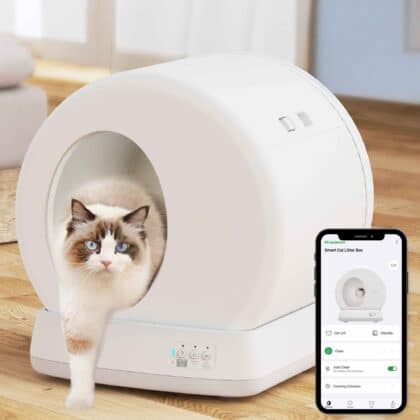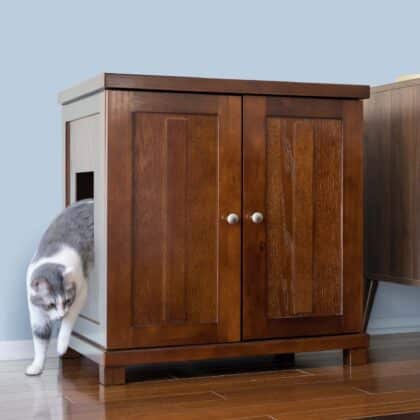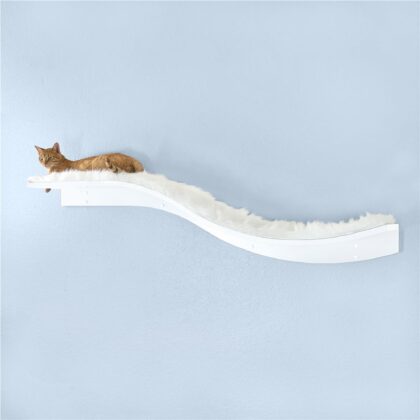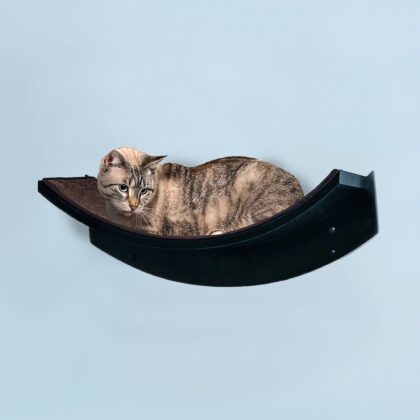
3 Things Every Cat Parent Should Know How To Do
Every cat parent knows the routine for proper care of their furry friend at home. Proper nutrition, either wet or dry food, fresh water, and a clean litter box. Spending quality time with your cat too, either snuggling or playing. With that said, do you know how to do other tasks related to your cat’s health, like trimming their nails and taking their temperature? If you haven’t yet mastered these techniques, it’s smart to practice now so you’re prepared when it’s necessary. You generally want to avoid trying something new for the first time when you need to do it quickly and efficiently. The Refined Feline has compiled a list of 3 things every cat parent should know how to do.
#1: Trimming Your Cat’s Nails
Knowing how to trim your cat’s nails will come in handy as a cat parent. Most cats’ nails will shed on their own and stay within a good, healthy length. However, this depends on what your cat has to scratch on in the house. Be sure to provide a few scratching posts, preferably at different heights. However, if your cat is older or doesn’t like to utilize scratchers, they may need a trim every so often. Make sure to keep an eye on their nail length so they don’t grow too long, which can cause issues over time. If your cat does need a nail trim, it’s quite easy to do as long as your cat isn’t too fussy.
The earlier you start practicing and touching their paws, the easier it will be as time goes by. There are specific trimmers for cat’s nails that are available at most stores.
How To Trim Your Cat’s Nails
To begin, make sure your cat is relaxed and the environment is quiet and free of distractions. The position of your cat will vary as well, depending on what’s comfortable for them and you. It may be laying them on their side or sitting on your lap like a human. Sometimes trimming their nails while they’re on your lap will work because it can provide comfort. Once they are comfortable, you’ll want to press gently on one of their pads to reveal their nail. Be sure to trim the nail’s curved end, but be sure to avoid the “quick”, or pink part of the nail. That part is highly sensitive and if you cut into the pink, it will most likely bleed. If you accidentally cut the quick, use some styptic powder to help stop the bleeding.
Continue to the next nail until you’re all finished, or pause for a bit if your cat needs a break. Any time you’re able to trim their nails, reward your kitty with treats or pets. Check back on their nails every few weeks to a month to ensure they’re not getting too long. If your cat is not a fan of nail trims, you can utilize a restraint bag to help keep them contained and safe.
Related: Humane Alternatives To Declawing A Cat
#2: Taking Your Cat’s Temperature
Hopefully, you won’t need to take your cat’s temperature, but as a cat parent, it’s always a good idea to know how to in case of an emergency. Cats are typically not fans of getting their temperature taken as it does need to be done rectally. Simply feeling your cat’s ears or face isn’t enough to know if your cat is ill or not. You may need a friend to assist you in holding your cat to make sure everyone stays safe.
Purchase a quick-reading thermometer with a soft rubber tip for safety, along with a water-based lubricant or gel. Depending on your cat’s temperament, you may need to grab them by the scruff of their neck. This can help deter them from trying to run away or lash out at you. Ultimately, how you hold your cat is up to you and how comfortable both of you are.
How To Take Your Cat’s Temperature
Put a small amount of lubricant on the thermometer’s end and lift your cat’s tail. Gently and slowly insert the thermometer into their rectum, about an inch deep wait for the thermometer to beep or signify that it’s done to ensure you have the correct temperature. A cat runs warmer than humans, so their ideal temperature is going to be between 100.5 and 102.5 degrees. A higher temperature can mean a fever or infection. A lower body temperature is also a sign that something is off. Be sure to seek veterinary treatment right away if their temperature is below 100 degrees. You can reward your cat with treats when done, but if they are feeling under the weather, don’t be alarmed when they don’t eat them,
#3: Giving Your Cat Medication
As cats age, they may require medications to help with certain chronic conditions. There are multiple ways to handle this, depending on your cat’s overall temperament. You can try putting the pill in their food, pilling the cat yourself, or using a pill “gun” or syringe to help. The medication your cat receives can be in either liquid or pill form, but most medications commonly come in pill form. You may be able to request a certain type from your vet if you have better success with one over the other. There are pill-shaped treats you can wrap around the med that will make it seem like a treat to your cat. Some cats may catch on that a pill is inside so make sure they don’t eat around it or spit it out.
How To Give Your Cat Medication
If your cat loves treats, this may be an easy and less stressful way to give your cat a pill. You can also try crushing up the pill or putting the liquid into a small amount of wet food or broth. This may entice your cat enough to eat the medication without having to pill them. It is a less effective method, though, as they may not get all of the medication, or simply refuse it.
If you have to pill your cat, it may take a few tries to get the process down. It’s best to hold their head and mouth open with one hand while placing the pill into their mouth with the other. Be sure to place your hand on top of their head, with your index and thumb towards their face, move your index finger and thumb down to the corners of their mouth and gently push in to open their mouth. Once they do, quickly and safely drop the pill into their mouth as far down the tongue as you can.
You’ll want to close their mouth so they won’t be able to spit the pill out. You may need to rub their throat or blow gently into their face to make them swallow. It’s a good idea to follow it up with either a treat or water. This can help ensure the pill goes down smoothly, especially if it’s larger.
Alternative Method
This technique will take some getting used to, so be patient with yourself and your cat through the process. There are syringe-shaped devices that can help you get the pill into their throat faster and easier as well. You can use the same method to open their mouths or you can utilize the pill gun. Place the pill gun along the corner of their mouth and once open, go about half an inch down with the pill shooter. Be careful not to go too deep or else you may scratch or irritate their throats. Using a pill syringe can help eliminate the chances of them spitting up the pill.
Being able to perform these three tasks can help you be prepared for anything that may arise as a cat parent. Your cat may not be grateful right away, but you’ll know that you’re keeping them healthy and happy for years to come!










